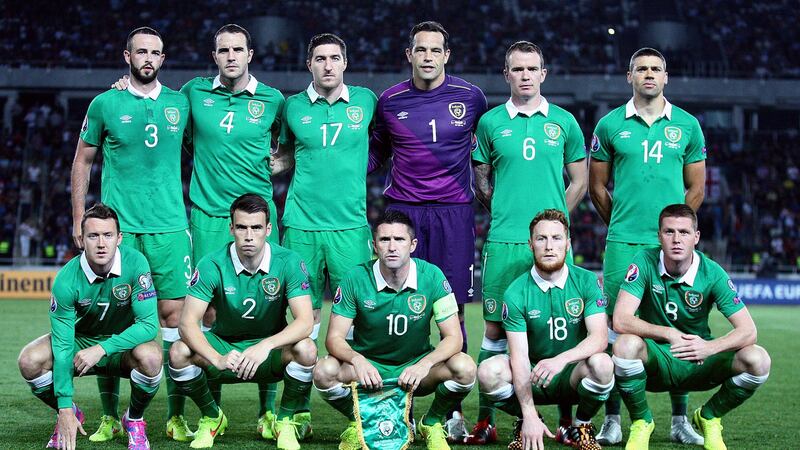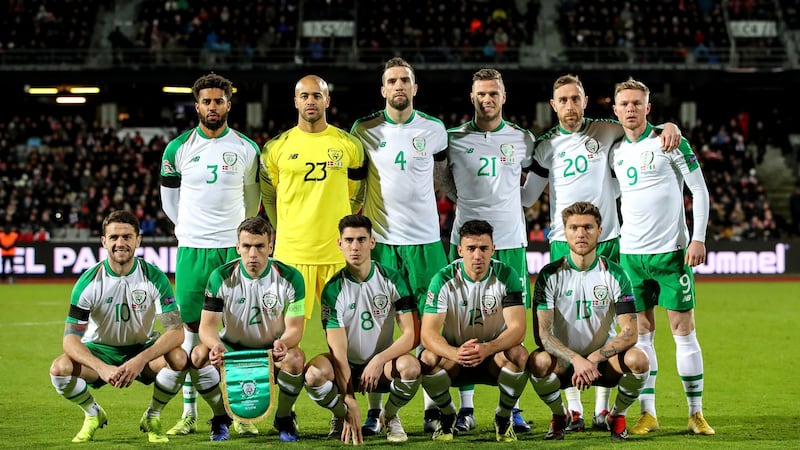A cold November night on Denmark’s eastern coastline was probably not where Martin O’Neill envisioned his reign as Ireland manager coming to an end but then it is, of course, a rare occurrence for any manager to go out on their own terms.
A defeat in Vienna put paid to Giovanni Trapattoni’s time in the hot seat, Steve Staunton was booed off the Lansdowne Road pitch in his final game after a draw against Cyprus while Brian Kerr left the biggest job of his career after a stalemate with Switzerland.
Final games in charge of Ireland are not often ones to reminisce over.
For O’Neill it was a final game that was a world, and almost a full team, away from his first competitive 90 minutes in charge.
Back in 2014 the O’Neill and Keane duo was fresh and airy and brought a real buzz to the atmosphere around the Ireland team – something that had been sorely missing in the final days and weeks of Giovanni Trapattoni’s spell. After a friendly win over Latvia in Dublin in November 2013 the self-styled “bad cop – bad, bad cop” managerial pair took charge of their first competitive game with a Euro 2016 qualifier against Georgia in Tbilisi a full 10 months after that friendly.
From the team that started that night, only Séamus Coleman took to the pitch 3,800km further north-west in Aarhus last Monday. Experienced players such as John O’Shea, Glenn Whelan, Robbie Keane and the goalscoring hero against Georgia that night – Aiden McGeady – are either retired or gone out of the reckoning.

On that September night in the Georgian capital where Ireland began their journey to a playoff against Bosnia & Herzegovina and then to Euro 2016 and beyond, the starting 11 read: David Forde; Séamus Coleman, John O’Shea, Marc Wilson, Stephen Ward; Aiden McGeady, Glenn Whelan, Stephen Quinn, James McCarthy, Jonathan Walters; Robbie Keane.
In that team there were nine players in the starting 11 were Premier League players with a total of 494 caps between them.
On Monday in Aarhus the team read: Darren Randolph; Séamus Coleman, Shane Duffy, Kevin Long, Richard Keogh, Enda Stevens; Cyrus Christie, Robbie Brady, Jeff Hendrick; Aiden O’Brien. The number of Premier League players in that team was six of the 11 starting while the combined number of caps had almost halved to 258 from the win over Georgia four years ago.
The nature of international football means that teams come and go as generations change. For O’Neill his tenure was one that spanned two generations with a number of the players he inherited in 2013 calling it quits on their international careers after Euro 2016.
One of those was Robbie Keane and O’Neill has been at pains to point out since then that Ireland lack what he calls a “natural goalscorer”. The fact that James McClean’s four goals in the 2018 World Cup qualifying campaign made him the team’s highest goalscorer gives substance to O’Neill’s point but it also must be remembered that Keane was a complete outlier. Not many international strikers score 68 goals in 146 games. International strikers playing for Ireland don’t even get within a sniff of those numbers.
Let’s not forget that Ireland’s record goalscorer before Keane came along and blew the stats out of the water was Niall Quinn with 21 goals. Put simply: whoever the Ireland manager was when Keane finally called it quits was always going to be hit with a major blow.
While the lack of quality players following quality players certainly hurt O’Neill there are also other factors which he can look to as playing a part in Ireland’s change of fortunes after Euro 2016.
From looking at the lineups in three of the biggest games in that period – the win over Germany in Dublin in 2015, the playoff win over Bosnia & Herzegovina and the last 16 defeat to France at the Euros themselves – there are three players who feature consistently. They are Coleman (granted, he didn’t play against Germany but he did play almost every other game of the campaign), Brady and McCarthy. With McCarthy manning the midfield and Brady posing a major threat with his deliveries at every set-piece, they were crucial to O’Neill’s sides.
In a 10-month spell from March 2017 to January 2018 all three of those players broke a leg.

Those various factors resulted in O’Neill overseeing a transitional period in the Ireland squad and it was that which proved to be his downfall. Just one win in 10 games this full calendar year with only San Marino scoring fewer goals in the Nations League than Ireland does not say a lot for O’Neill’s management but then the point can also be made that a raft of debutants came into the team this year. Of the four goals Ireland scored in all of 2018, they were all netted by first-time goalscorers while two of them were by players scoring on their debut and the others – Shaun Williams’ consolation against Wales and Alan Judge’s winner against the USA – were scored on the players’ second and fifth caps respectively.
While starting six natural defenders and showing little or no attacking intent in a dead-rubber match when you’re already relegated won’t do much for a manager’s credentials, O’Neill can certainly look back and rue some bad luck during his tenure. Whoever the new manager is, he will have quite the job on his hands taking over a squad in the doldrums and without a goal in 397 minutes of football.











